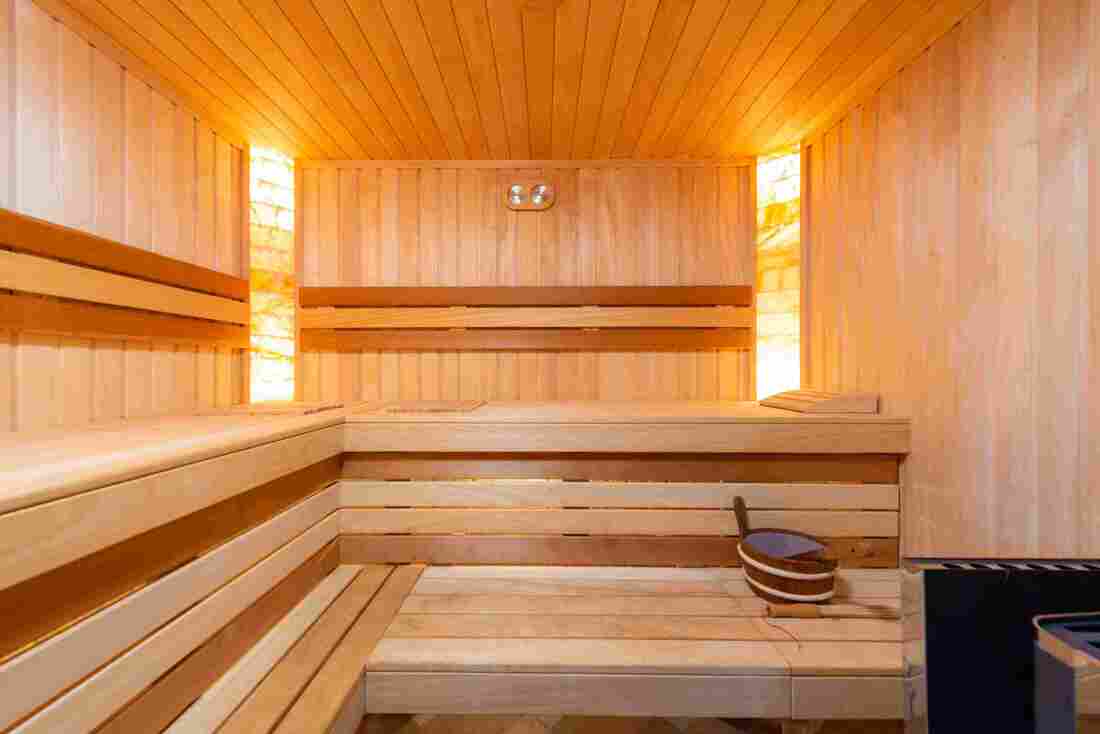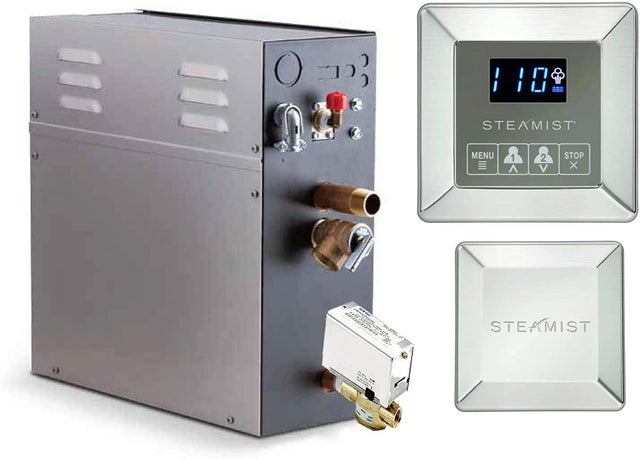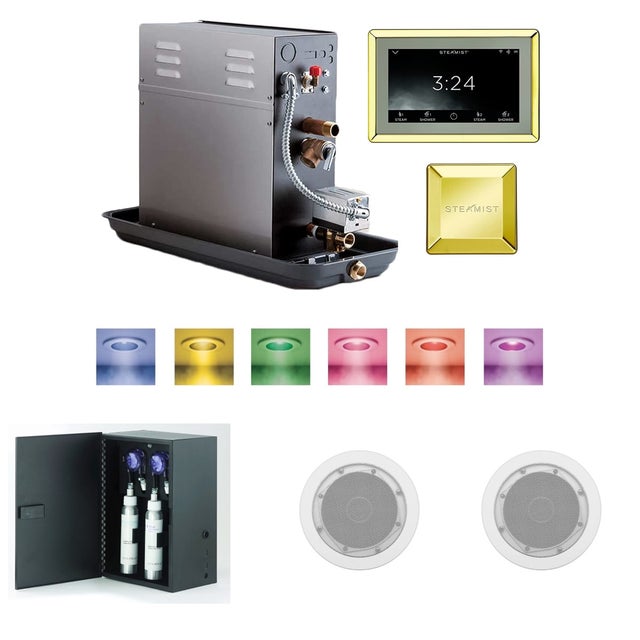|
While nearly everyone likes the steamy experience of a refreshing Sauna, it's simply not possible to have it in one's house or apartment without a residential steam generator. And that's where a steam bath generator built for your home comes into the picture. It not only provides you with a steamy experience but also cuts down your steam sauna expenses, making it easier on your pocket. And just like any other machine, your coveted steam bath generator installation is prone to damage caused by regular wear and tear, which will ruin your steam room experience. But fret not, because to ease out your steam sauna bath, we present here five awesome tips for maintaining a residential steam generator. So, do read on! Top 5 maintenance tips for a residential steam generator#1. Install an auto flush system After each usage, flushing your home steam room generator is the best way to ensure years of trouble-free fun. Minerals in your water might transform into calcium and impair performance if they aren't cleaned out of the generator regularly. When they do, they create a barrier between your generator and the heat source, requiring it to work more (and take more energy) to maintain the same temperature. So two hours after each steam bath cycle, the AutoFlush technology automatically and electronically cleanses the generator of mineral accumulation. In fact, after each shower, you should consider a cleanse for your home steam generator. It's easy to set up an AutoFlush system, and it'll take care of all the cleaning for you. The water drains fully from the generator once the AutoFlush valve is opened. The greatest part? When you connect the AutoFlush to your steam bath system, you'll always have clean, fresh water when you switch on the controls. #2. Install a water softener in your house Hard water can be a serious issue depending on where you live. The concentration of mineral deposits in the entering water is referred to as hard water. In actuality, hard water forms an insoluble soap film on your hair and skin, causing it to "squeak," while extremely soft water feels "slippery" and gives the sense that you "can't rinse the soap off." Hard water deposits cause scales to build up over time, shortening the life of your steam bath generator. If you reside in a desert area like New Mexico or Arizona, you're likely to have the toughest water. So you will need to be particularly vigilant about keeping your generator in good working order. The AutoFlush mechanism, as previously mentioned, flushes away the steam generator water after each shower, preventing mineral accumulation. A water softener can also prevent mineral deposits from forming and obstruct performance. Both will work together to ensure that your steam shower system lasts as long as possible. #3. Perform a manual cleaning of your residential steam generator Clean steam is devoid of any additions, contaminants, or other things that might threaten a completed product's sterility. Specialized equipment that warms cleansed water produces clean steam for commercial uses. The equipment for clean steam generators is often made of stainless steel to ensure a high-quality, corrosion-resistant system. In comparison, a typical residential steam generator, often known as a boiler, uses a standard water line to operate. So, you might need to avail water cleaning services to cleanse the water line as well as the water being supplied to your steam generator. It's important to note that you can't just convert a standard utility steam generator to clean steam. That means you'll need a particular steam generator that uses cleansed water to make clean steam. How does a clean steam generator work? A clean residential steam generator turns incoming purified water into clean steam by heating it with utility steam from the generator's opposite side. Clean steam and utility steam should never be mixed. The quality of the water fed into the system determines the steam quality. Contaminants that do enter the system, on the other hand, can be eliminated using a variety of approaches. Feedwater is injected into the industrial clean steam generator system at a greater pressure than the needed clean steam pressure to supply the temperature difference for heat transfer. To ensure steam purity, any surfaces that come into touch with water should be constructed of stainless steel. There's more to it For clean steam generation, the water supply to your residential generator must be nearly impurity-free. Also, clean steam production must fulfill extremely stringent criteria for important applications in sectors that rely on sterile surroundings and equipment. Although it's natural to think that steam from boiling water is clean and pure, the criteria for "clean" water for specific applications—particularly pharmaceutical applications—are quite high. You need to catch small traces of pollution to maintain the cleanliness of the steam produced. And water treatment systems that employ fine, semi-permeable membranes to physically remove impurities from the system are available for this purpose. This pre-treatment eliminates pollutants from the feedwater and ensures that clean steam is completely free of contaminants. Because it includes significant quantities of carbon dioxide and other impurities like sulfur dioxide, conventional water vapor is frequently referred to as "dirty steam." Controlling the quantity of carbon dioxide, carbon monoxide, and activated carbon in the water, as well as other parameters, can help to assure water quality. High-quality clean residential steam generators are intended to provide a centrifugal force in the separator, propelling entrained droplets to the separator's wall and resulting in successful impurity removal. No internal components such as vanes, demisters, or baffles are required to achieve the necessary 3-log separation ratio. #4. Check seals and joints for tightness At least once a year, you should inspect the silicone seals, water supply joints, valves, and nozzles in your steam sauna bath. Replace the silicone seals if they are loose. It's simple to seal the doors and walls. You can use the most basic plumbing abilities to tighten or repair nozzles, couplings, and drainage systems. #5. Inspect your equipment on a regular basis Inspections for planned maintenance are an important aspect of the preventative maintenance strategy. It's a good idea to start doing service checks based on real usage. You may only use the steam generator once a week. In this situation, the unit will only encounter about 50 cycles per year and will not need to be inspected annually. However, a quarterly inspection is definitely the best option if you operate it more frequently. Looking to buy a Steam Shower that’s loaded with features and can save you money? Check out our guide to the Best Steam Shower Generator in 2024. The Final Word Maintaining your prized residential steam bath generator might seem hectic, but trust us, it will add years to your coveted machine. Thus, we recommend going the extra mile to clean or repair your residential steam generator when needed. Apart from cleaning and maintaining your residential steam generator, you can also add aromasense and Steamist control to elevate your overall steam sauna bath experience. We hope you liked our take on residential steam generator maintenance, and it'll help you have the perfect steamy sauna experience and maximize its benefits. For any questions or queries, do reach out to us; we'd be happy to help!
1 Comment
John
7/6/2023 10:06:36 am
How long should a commercial steam (at my local gym) room cycle on and off? Our gym will only allow it to turn on for a few minutes every 30 minutes to avoid it braking down. Us members are so upset at this!
Reply
Your comment will be posted after it is approved.
Leave a Reply. |
AuthorJ.D Moreno Archives
July 2024
Categories |
STEAMIST IN STOCK AND READY TO SHIP! CALL 786-837-1235 FOR EXPERT CONSULTATION
USE CODE STEAMIST TO RECEIVE EXTRA 5% OFF AT CHECKOUT
USE CODE STEAMIST TO RECEIVE EXTRA 5% OFF AT CHECKOUT
FREE 2ND DAY DELIVERY
Some Exclusions Apply Call for Details
Some Exclusions Apply Call for Details
Showroom Hours
Mon - Fri 9 Am - 6 PM
Mon - Fri 9 Am - 6 PM





 RSS Feed
RSS Feed

